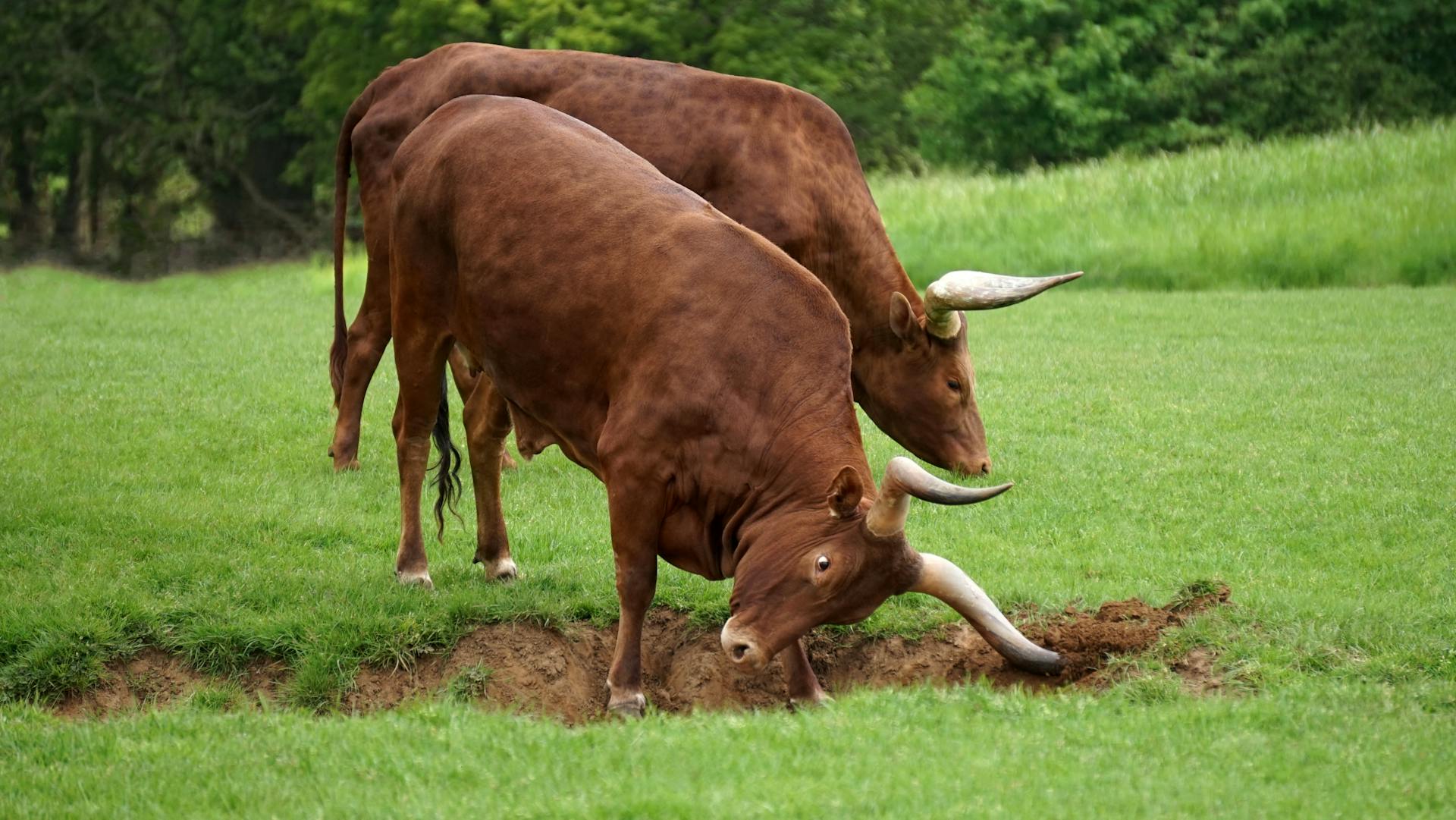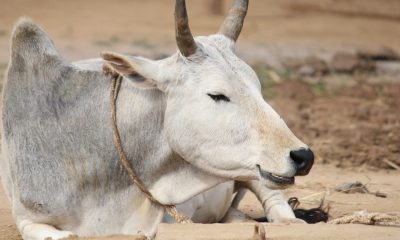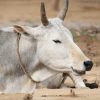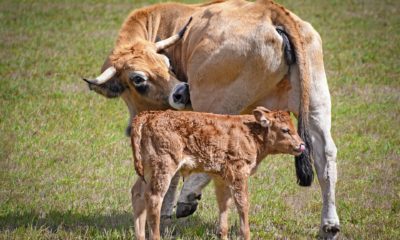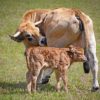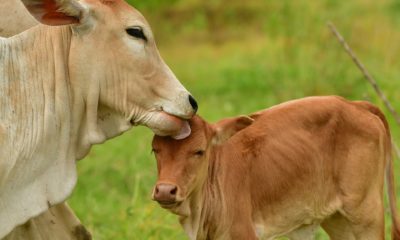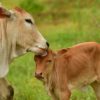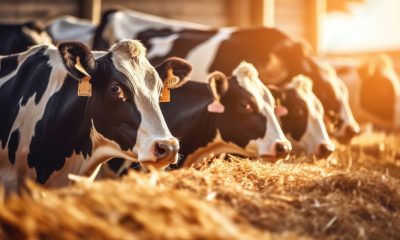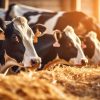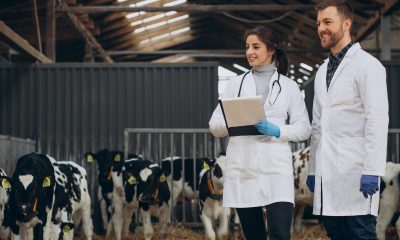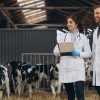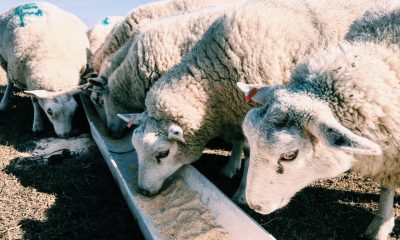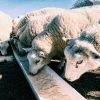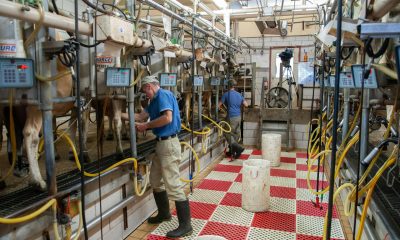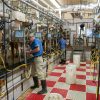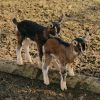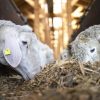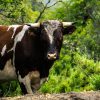Cattle
Bull Genetics and Genomic Testing: Enhancing Breeding Programs
Introduction
In the dynamic world of modern agriculture, pursuing optimal livestock breeding practices is crucial for ensuring sustainable and efficient food production. Among the various factors influencing breeding success, genetics plays a pivotal role in influencing traits such as growth rate, disease resistance, and overall productivity. In this context, the utilization of advanced technologies in bull genetics and genomic testing has emerged as a transformative force, offering unprecedented insights into the genetic makeup of livestock.
This article explores the pivotal role that bull genetics and genomic testing play in enhancing breeding programs. We will delve into the science behind genomic testing, its practical applications in bull selection, and the broader implications for livestock industries aiming to improve the quality and efficiency of their breeding practices. As we navigate through the intricacies of bull genetics, it becomes evident that the integration of cutting-edge genomic technologies not only refines breeding strategies but also contributes to the overarching goal of sustainable and resilient agriculture.
Understanding Bull Genetics
Bull genetics form the genetic blueprint that underpins the characteristics and traits of bulls within the livestock industry. This genetic makeup, inherited from both the sire and dam, plays a pivotal role in shaping the progeny’s performance, health, and overall quality. To comprehend bull genetics is to delve into the intricacies of DNA, unravelling the code that governs traits ranging from coat colour and size to more complex attributes like disease resistance and reproductive prowess.
Inheritance of Genetic Traits:
Bull genetics follow the principles of Mendelian inheritance, where genes are passed down from parent to offspring. Each bull carries a unique combination of genes that dictates its physical and physiological characteristics. Breeders can make well-informed decisions about their breeding programs by using their understanding of inheritance patterns to predict the likelihood that particular traits will manifest in future generations.
Quantitative and Qualitative Traits:
Bull genetics encompass both quantitative and qualitative traits. Quantitative traits, such as weight gain or milk production, are influenced by multiple genes and environmental factors. Qualitative traits, on the other hand, are typically controlled by a single gene and result in distinct, observable characteristics. Breeders analyze and select bulls based on these traits to achieve specific breeding goals, whether improving meat quality, enhancing growth rates, or ensuring disease resistance.
Genetic Markers and Selective Breeding:
Advancements in genetic research have identified specific genetic markers associated with desirable traits. These markers act as signposts within the bull’s DNA, guiding breeders to propagate beneficial characteristics selectively. By strategically using these markers, breeders can enhance the efficiency of their breeding programs, achieving a more targeted and accelerated genetic improvement.
Genetic Diversity:
Maintaining genetic diversity is crucial for livestock populations’ long-term health and adaptability. Inbreeding, or the mating of closely related individuals, can cause a reduction in genetic diversity and increase the risk of undesirable traits. Understanding bull genetics allows breeders to implement strategies that promote genetic diversity, ensuring the resilience and adaptability of the overall herd.
Reproductive Performance:
Bull genetics also significantly influence reproductive performance. Traits related to fertility, gestation length, and overall reproductive health are intricately linked to the genetic makeup of a bull. By selecting bulls with favourable reproductive traits, breeders can enhance the efficiency of breeding programs and ensure a robust reproductive performance within the herd.
The Genomic Revolution
Traditionally, assessing a bull’s genetic potential relied on pedigree information and performance records. However, the advent of genomic testing has ushered in a new era of precision breeding. Genomic testing involves the analysis of an animal’s DNA to pinpoint specific genetic markers associated with desirable traits.
Genomic testing facilitates the early identification of genetic potential in bulls, enabling breeders to make informed decisions at a much earlier stage in the animal’s life. This technology has become a game-changer, offering a more comprehensive understanding of an individual’s genetic profile and, consequently, revolutionizing the breeding landscape.
Advantages of Genomic Testing:
Genomic testing in breeding programs offers many advantages, revolutionizing how livestock breeding is approached. Here are the key benefits:
- Early Selection of Superior Individuals: Genomic testing allows for the early identification of superior genetic individuals. By analyzing the DNA of young animals, breeders can make informed decisions about their potential contributions to the herd, enabling early selection of the most promising candidates for breeding programs.
- Precision in Trait Improvement: Genomic testing pinpoints specific genetic markers associated with desirable traits. This precision empowers breeders to strategically enhance milk production, meat quality, disease resistance, and other economically important traits. By focusing on these markers, breeders can accelerate the improvement of desired traits within the herd.
- Accelerated Genetic Progress: The ability to assess genetic potential early in breeding programs shortens the generation interval. This acceleration in the selection process allows for more rapid propagation of desirable traits throughout the herd. As a result, genetic progress occurs faster, leading to improved overall herd quality.
- Increased Accuracy in Predictions: Genomic testing provides a more accurate prediction of an animal’s genetic potential than traditional methods. By directly examining the DNA, breeders gain insights into the actual genetic makeup of an individual, reducing the margin for error in predicting its performance and the traits it may pass on to its offspring.
- Improved Breeding Decision-Making: The wealth of genetic information obtained through genomic testing enables breeders to make more informed and data-driven decisions. This, in turn, minimizes the reliance on subjective observations and intuition, leading to more strategic and effective breeding choices.
- Enhanced Disease Resistance: Genomic testing can identify genetic markers associated with resistance or susceptibility to certain diseases. By selecting animals with a higher resistance to prevalent diseases, breeders can contribute to the overall health and welfare of the herd, reducing the need for interventions and pharmaceuticals.
- Optimized Resource Utilization: Breeders can maximize resource utilization in their breeding programs by selecting animals with known genetic strengths. This includes more efficient use of feed, reduced veterinary costs, and improved overall management practices, leading to enhanced economic sustainability.
- Facilitation of Breeding Program Goals: Genomic testing aligns breeding programs more closely with specific goals. Whether the aim is to improve milk production, meat quality, or other economically relevant traits, genomic information provides a roadmap for achieving these objectives with greater precision and efficiency.
Implementation in Breeding Programs
Integrating genomic testing into breeding programs involves collaboration between geneticists, researchers, and breed associations. Breeders can use this information to make informed decisions about mating pairs, enhancing the probability of desired traits in the offspring. Additionally, breeding programs can be tailored to meet specific market demands and industry standards.
Challenges and Considerations:
- Cost Implications: Genomic testing can be relatively expensive, especially when dealing with many animals. The cost of conducting tests on a significant portion of a herd might pose financial constraints for some breeders, impacting the widespread adoption of this technology.
- Data Interpretation Complexity: Interpreting and analyzing the genetic data generated from genomic testing can be intricate and demanding. It requires specialized expertise and resources to decipher the information accurately, making it challenging for smaller-scale operations or those lacking technical skills.
- Understanding Complex Traits: While genomic testing can identify specific genetic markers associated with certain traits, understanding complex traits influenced by multiple genes or environmental factors remains a significant challenge. Features such as temperament, adaptability, or certain aspects of disease resistance might have multifaceted genetic underpinnings that still need to be fully understood.
- Ethical and Social Considerations: The ethical implications of genetic manipulation and selection are a growing concern. Some may question the ethical boundaries of altering genetic traits solely for human benefit, leading to debates around the ethical use of genomic technologies in breeding.
- Genetic Diversity Preservation: Overreliance on a small pool of highly selected genetic individuals may lead to a drop in genetic diversity within a breed. This reduced diversity can increase susceptibility to diseases or limit the adaptability of the herd to changing environmental conditions.
- Regulatory and Standardization Challenges: Establishing standard protocols and regulations for genomic testing in breeding programs is essential to ensure consistency, reliability, and fairness across various operations. A Lack of standardized practices may hinder the comparability and validity of results between different testing facilities or regions.
- Long-Term Validation and Application: As genomic technologies advance, ongoing validation and verification of genetic markers and their correlations with traits are essential. Ensuring these markers’ reliability and long-term applicability is crucial for sustainable and effective breeding programs.
Conclusion:
Bull genetics and genomic testing have revolutionized breeding programs, offering unprecedented insights into the genetic traits influencing livestock performance. Integrating these technologies empowers breeders to make more informed decisions, ultimately leading to the development of healthier, more productive, and genetically superior herds. As technology advances, the synergy between traditional breeding knowledge and cutting-edge genomic information promises to shape the future of livestock breeding programs.



